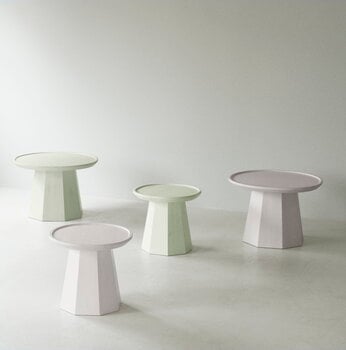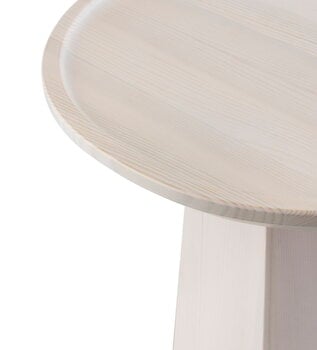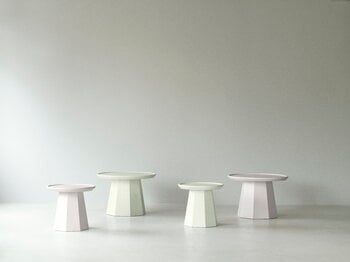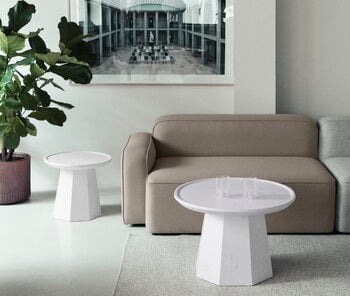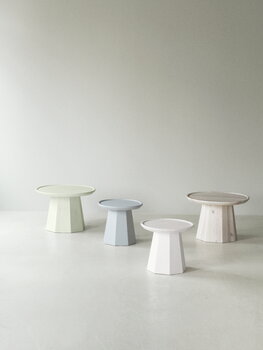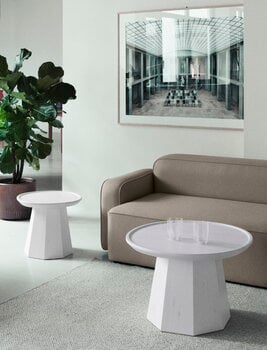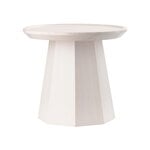Normann Copenhagen's Pine table is a beautiful, multifunctional side table designed by Simon Legald. The sculptural table is crafted using solid pine, a typical Scandinavian material, with a distinctive grain pattern that represents the Nordic soul and warmth in a stylish way. The combination of an octangular, oversized base and round tabletop gives the table an intriguing contrast, while the small edge around the tabletop adds functionality to the design, helping to keep items from slipping off the table.
The small Pine table is perfect as a side table next to an armchair and sofa, or as a nightstand in the bedroom.

